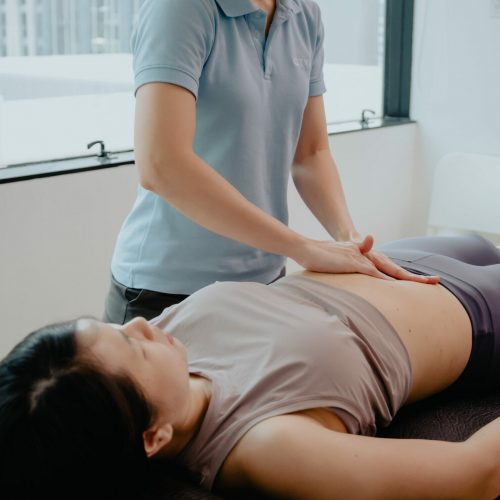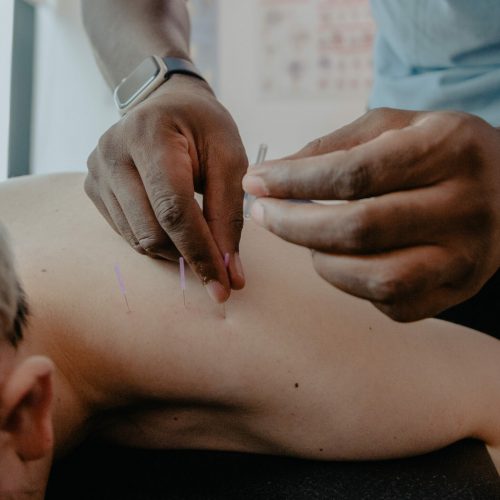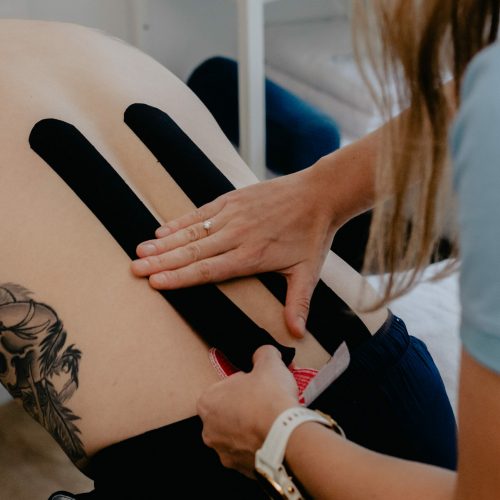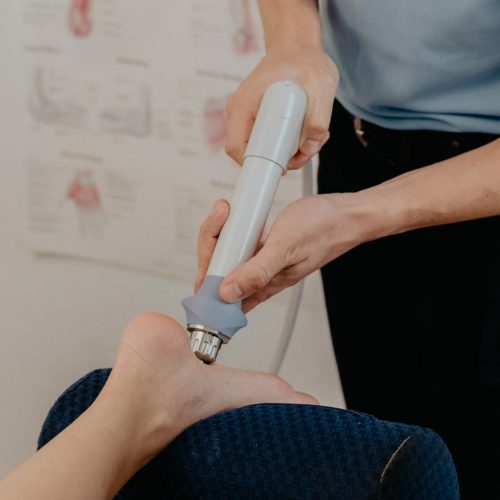
Corrective Exercises

Hands-on Manual Therapy

Dry Needling

Sports Taping

Shockwave Therapy

Ultrasound Therapy

We provide tailored treatments to improve quality of life for babies, children, and adolescents.
Because your child deserves the best.

Paediatric physiotherapy is an area of physical therapy that focuses on helping babies, children and adolescents with physical difficulties. It can help to reduce pain, improve mobility, restore function and develop strength in children who may have been born prematurely, experienced an illness or injury, or have a chronic condition that affects their movement.
Our paediatric physiotherapists work closely with your family and other healthcare professionals to support the development of your child’s physical abilities in every way possible. Treatment commonly consists of activities such as stretching, strengthening, balance work, coordination exercises and other age-appropriate therapies tailored to each individual patient’s needs.
The goal of paediatric physiotherapy is to improve the quality of life of your child by helping them reach their fullest potential physically and emotionally. It can help to treat a wide range of conditions, including:
At City Osteopathy & Physiotherapy, we strive to provide a warm and supportive environment for both you and your child. During a paediatric physiotherapy assessment, our experienced paediatric physiotherapist will first conduct a detailed evaluation to understand your child’s unique abilities and needs.
Together, we will then set goals based on their specific needs, and use fun and age-appropriate activities like play therapy, music, or toys to engage your child in completing the exercises. We will next discuss progress made during each session and also provide personalised instructions for integrating exercises into your child’s everyday life, helping them to make ongoing progress.
Our detailed documentation of each session helps ensure that you and your family have a clear understanding of your child’s progress and the next steps in their treatment with us.
Depending on your child’s symptoms, our team may use treatment methods such as:







If your child has an insurance plan or is under your insurance plan, City Osteopathy and Physiotherapy offers direct billing service for several insurance providers:

To enjoy cashless transaction please bring with you:
Don’t worry if your insurance is not listed here. After each session we will email you an itemized bill so you can submit it for reimbursement.
We do not charge for completing medical insurance forms, but an administration fee is charged if an official letter or report is required to be produced for the insurance company or other entity.
Address: 11 Bidadari Park Dr, The Woodleigh Mall, #02-30 S(367803)
Contact us: TBA
Opening hours:
TBA
Yes, parents and caregivers are encouraged to attend paediatric physiotherapy sessions with their child to provide support and participate in their care.
Your child should wear comfortable, loose-fitting clothing that allows for easy movement during the session. It is best to avoid clothing with zippers, buttons, or tight elastic bands that may interfere with the assessment or treatment. For example, leggings or sweatpants and a t-shirt or tank top are ideal. Shoes should also be easy to put on and take off, such as sneakers or sandals with Velcro straps. If your child has any orthotics or assistive devices, such as braces or crutches, they should bring them to the session.
The number of paediatric physiotherapy sessions required depends on the severity of your child’s condition and their response to treatment. Your physiotherapist will work with you to develop a treatment plan that meets your child’s needs and provides the best possible outcomes.
Physiotherapy is a form of physical therapy that focuses on helping children achieve their best physical potential through activities such as stretching, strengthening, balance work, coordination exercises and other age-appropriate therapies tailored to each individual patient’s needs. Occupational therapy works with children with disabilities or developmental delays to improve fine motor skills and daily activities. Although both therapies are beneficial for children, they focus on different goals.
It is important to discuss with our paediatric specialists what type of therapy will be the most beneficial for your child and their unique needs. With the help of a qualified paediatric physiotherapist, you can feel confident that your child is receiving the best care possible.
Massage therapy focuses on manipulating the soft tissues in the body to promote relaxation and healing. Physiotherapy, on the other hand, works with a patient’s muscles and joints to improve movement, strength, coordination and balance. Massage can be used as part of an overall paediatric physiotherapy plan but should not replace it.
The best way to determine which type of therapy will be the most beneficial for your child is to speak with our specialists and discuss their individual needs.
Physiotherapy is a medically-focused and technology-driven form of physical therapy, practiced differently around the world. In North America, physiotherapy is commonly referred to as physical therapy, while in Europe “physiotherapists” and “physical therapists” are two distinct roles. Generally, physiotherapists use specialised techniques such as manual therapy and physiotherapeutic treatments to treat their patients. On the other hand, physical therapists use an array of therapeutic approaches that emphasise exercise and motion rather than a specific set of medical treatments. Despite the small differences in naming conventions throughout different countries, physiotherapy and physical therapy both provide similar approaches to diagnosis, prevention and treatment of various issues or diseases related to movement dysfunction.
Our paediatric physiotherapists come from various backgrounds and use a combination of techniques based on what is best suited for your child’s condition, so rest assured, your little one will be in great hands!